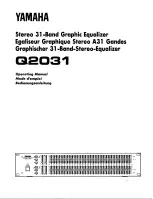
Chapter 1:Overview
2
Equalizer Installation and Administration Guide
Introducing Equalizer
The Equalizer™ 7.0 system is a high-performance load-balancing appliance that features:
■
Intelligent load balancing based on multiple, user-configurable criteria.
■
Layer 7 content-sensitive load balancing, including cookie-based persistence and URL
load balancing.
■
Geographic load balancing (requires optional Envoy package).
■
Real-time server and cluster performance monitoring.
Using highly-efficient Network Address Translation (NAT) technology, adaptive load-
balancing algorithms, and Layer 7 load balancing techniques, Equalizer distributes
requests across a pool of servers. By automatically evaluating server capabilities, changes
in server status, and even the origin and type of the incoming request, Equalizer ensures
that each request is directed to the server best able to handle it.
Intelligent Load Balancing
Equalizer functions as a gateway to one or more sets of servers known as virtual clusters.
When a client submits a request to an Equalizer-managed site, Equalizer identifies the
virtual cluster that the request is intended for, determines which server in the cluster will
be best able to handle the request, and forwards the request to that server for processing.
To route the request, Equalizer uses Network Address Translation to modify the header of
the request packet and forwards the modified packet to the selected server.
To determine which server to route a request to, Equalizer uses intelligent load-balancing
algorithms that take into account the configuration options set for the cluster and servers,
real-time server status information, as well as information from the request itself.
Network Address Translation
Equalizer’s Network Address Translation (NAT) subsystem distributes incoming client
requests among the available servers. The NAT subsystem records the existence of the
request, selects the best available server, rewrites the TCP/UDP and IP headers of the
request packet, and then forwards the translated packet to the selected server. Because the
servers are configured to use Equalizer to gateway all packets, Equalizer performs the
reverse translation as the server response packets leave the cluster.
When Equalizer receives an incoming packet that is not destined for a virtual cluster
address, the packet is passed through unaltered. Similarly, when Equalizer receives an
outgoing packet that is not a response to an existing virtual cluster connection, the packet
is simply passed through to the external network.
Load Balancing Configuration
When you configure your virtual cluster, you can control how Equalizer will balance the
load across your servers by selecting a load balancing algorithm:
■
Round Robin—requests are simply routed to each server in turn. If Equalizer detects
that a server in the cluster is down, no requests are dispatched to that server.
Summary of Contents for Equalizer
Page 2: ......
Page 4: ...iv Coyote Point Systems Inc ...
Page 32: ...Chapter 2 Installing Equalizer 22 Equalizer Installation and Administration Guide ...
Page 42: ...Chapter 3 Configuring Equalizer 32 Equalizer Installation and Administration Guide ...
Page 108: ...Chapter 7 Troubleshooting 98 Equalizer Installation and Administration Guide ...
Page 114: ...Appendix B Using Reserved IP Addresses 104 Equalizer Installation and Administration Guide ...
Page 118: ...Appendix C Regular Expression Format 108 Equalizer Installation and Administration Guide ...
Page 130: ...Appendix E Technical Specifications 120 Equalizer Installation and Administration Guide ...
Page 136: ...Appendix F License and Warranty 126 Equalizer Installation and Administration Guide ...













































